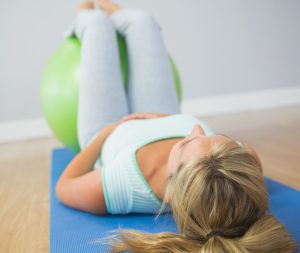Exercise
How to strengthen your pelvic floor muscles
 We may first hear the term ‘pelvic floor’ from our GP or midwife during pregnancy or after childbirth. But pelvic floor health has a much longer-term impact on physical wellbeing.
We may first hear the term ‘pelvic floor’ from our GP or midwife during pregnancy or after childbirth. But pelvic floor health has a much longer-term impact on physical wellbeing.
Fortunately, no matter what our age, pelvic floor ‘sagging’ is largely reversible. All it takes is a few simple daily squeezes to strengthen and tone. Pelvic floor exercises, also known as Kegels, are the key. Often linked to Pilates and a focus on the inner core, it’s not so much a time-warping ‘pelvic thrust’ (that may indeed nearly drive you insane) but more of a subtle, strong, inner squeeze, repeated three or four times daily (yes, every day).
Perk up your pelvic floor with Liz’s exercise tips and keep those all-important muscles as strong as possible.
How to strengthen your pelvic floor muscles
Step one
First, tighten (squeeze) the muscles around your back passage, as though trying to suppress passing wind. Hold this squeeze as you then tighten around the vagina and front passage, as though trying to suppress the flow of urine. It should feel like a ‘squeeze and lift’. Hold for a few seconds to begin with (don’t forget to breathe). Then make sure you fully let go and relax before squeezing again. You may feel your inner core muscles engage slightly around your stomach, but your buttocks, hips and thighs should be relaxed – it’s an inner thing. Aim to exercise the pelvic floor muscles three to four times daily and work up to holding the squeeze for a count of ten.
Step two
As well as the long, deep ‘squeeze and hold’ exercises, it’s also important to do repeated bursts of much shorter, faster squeezes. This works the fast-twitch muscle fibres that need to jump into action to prevent embarrassing leaks when we laugh, cough or sneeze. Aim to do up to ten of these three to four times a day.
Step three
Do the exercises in different positions, such as while sitting, lying down and even standing up, which is harder work for weak muscles. Fully focus, as the quality of the moves makes all the difference to improved muscle function and can help prevent future problems of bladder and bowel incontinence.
Step four
Engaging your core can also aid strengthening. Gently pull the lower stomach in towards your spine as you breathe out; you should not see your outer stomach muscles pulling in or your ribs flaring. You can hold your core for a few seconds while you still continue to breathe. Gradually build up the amount of time you are able to hold it. You can do this exercise before you pick up items, while walking, swimming, before rolling over in bed, lying down, before you sit-to-stand and during all of your daily activities.





